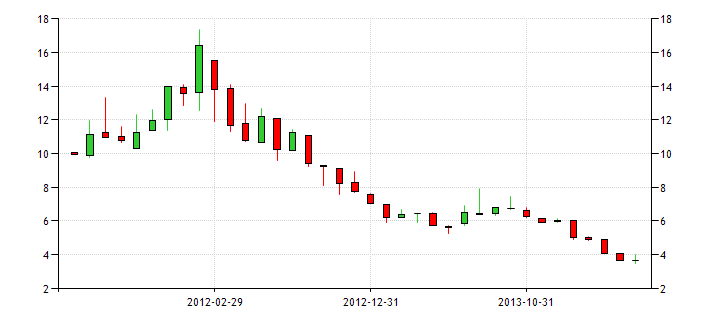June 5th ECB Meeting
There has been a lot on Bond Buying in Europe and that enthusiasm has transferred over to the United States with the thought that European Central-bank President Mario Draghi is going to embark on some massive bond buying stimulus program similar to the US Federal Reserve`s Bond Buying stimulus program. These moves in some of these European Bonds and even the US 10-Year Yield moving 20 basis points ahead of the announcement sure are setting bond markets up for some massive disappointment compared to the actual much hyped bond buying program announcement scheduled for June 5th.
Portugal 10-year Bond Yield

European Yields & Upside Risk
Belgium 10-year Bond Yield

This sure seems like a buy the rumor, sell the news event if there ever was one in financial markets given the fact that Mario Draghi and the ECB has been a serial disappointer for actually delivering on his rhetoric with actual policy actions. Spanish 10-year yields being close to 2.80%, Germany 10 Year Bond Yields at 1.33%, Italy 10 Year Bond Yields at 2.93%, Belgium 10 Year Bond Yields at 1.87% and France 10 Year Bond Yields at 1.72%. These sure seem out of whack with the solvency reality circus of just three years ago. Did these countries all the sudden become balance sheet healthy and solvent overnight? What kind of risk is there in owning these notes long-term? This cannot possibly be sustainable, talk about bubbles in financial markets and mispricing of risk!
Spain 10-year Bond Yield

Debt to GDP Ratios
There has got to be a lot of money made by taking the other side of this trade, this is money spending European governments we are talking about with more social programs than you can possibly imagine governments spending their tax dollars on. There are two issues here one may be a supposed deflation in Europe the other is that these countries are going the other direction in terms of solvency issues with climbing Debt to GDP Ratios. Are these low yields really going to hold over time? Are these investors being paid a high enough yield on these bonds for the solvency risks they are taking?

